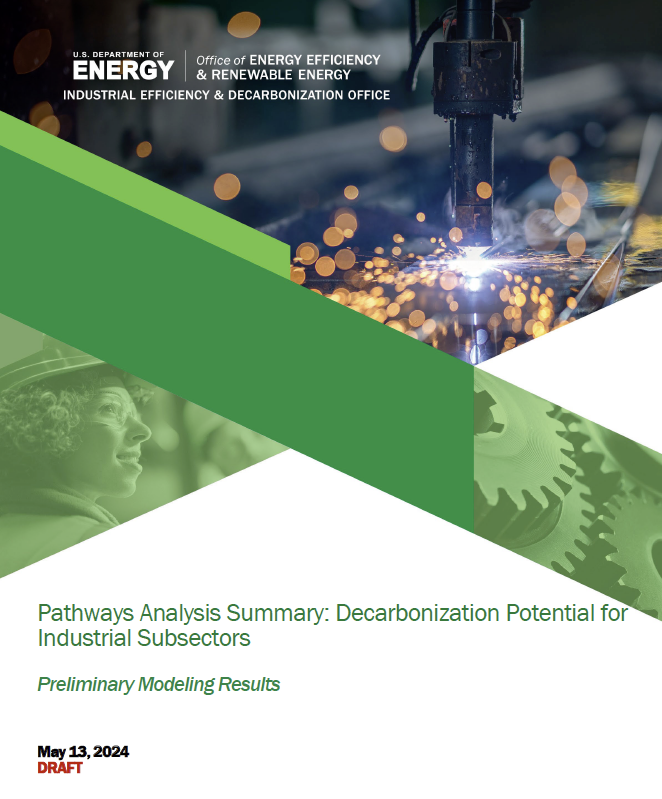Pathways Analysis Summary: Decarbonization Potential for Industrial Subsectors
Preliminary Modeling Results
Lead authors:
Caroline Dollinger, Energetics
Joe Cresko, U.S. DOE, Industrial Efficiency and Decarbonization Office (IEDO)
Sam Gage, Energetics
Dipti Kamath, Oak Ridge National Laboratory (ORNL)
Brian Ray, Energetics
Jibran Zuberi, Lawrence Berkeley National Laboratory (LBNL)
Ali Hasanbeigi, Global Efficiency Intelligence (Lead for Steel and Cement Industry)
This document summarizes draft modeling efforts by the U.S. Department of Energy (DOE) Industrial Efficiency and Decarbonization Office (IEDO), extending and expanding on the 2022 Industrial Decarbonization Roadmap. These draft modeling results are provided by IEDO to support stakeholder engagement and inform strategic decisions across the office and department.
Section 1 offers an overview of the context for this analysis, details on the decarbonization pillars characterized, and information about the models used.
Section 2 presents the modeling results for one net-zero emissions pathway for six industrial subsectors: cement, chemicals, food and beverage, iron and steel, petroleum refining, and pulp and paper. It is important to note that these pathways are examples and not definitive; multiple pathways will be necessary for the success of industrial decarbonization.
Section 3 provides an overview of the “rest of industry” subsectors and a high-level overview of net-zero barriers, challenges, pathways, and technologies. IEDO will continue to consider net-zero pathways and modeling for these additional subsectors. More details will be made available on the IEDO website in the future.
To read the full report and see complete results and analysis of this new study, Download the full report from the link above.
Don't forget to Follow us on LinkedIn, Facebook, and Twitter to get the latest about our new blog posts, projects, and publications.

